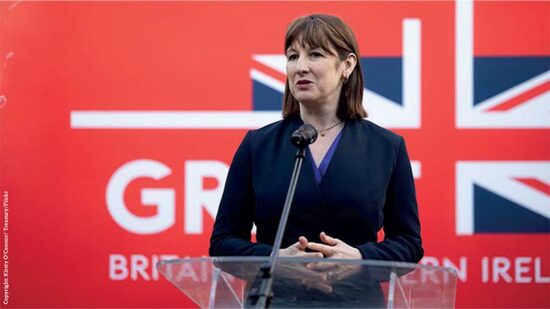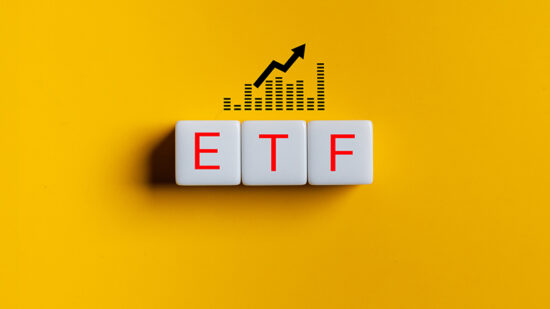With three people under observation for coronavirus in India’s capital Delhi, one case identified in the UAE and the head of its General Civil Aviation Authority reportedly “not really concerned” about its spread in light of measures to screen arriving passengers, how is the region and the wider world going to be impacted by this latest threat?
See below six seasoned investor views painting scenarios of where this may be heading.
George Lagarias, chief economist at Mazars
Markets retrenched slightly last week, as news of the coronavirus outbreak in China continued to make headlines. The death toll is sadly increasing and it looks like this is something that will be at the epicentre of discussion in the next few weeks.
As always, the threats of a pandemic invoke the memories of the 1918 Spanish Influenza which killed about 3% to 5% of the world’s population in 1918. Given that no one has particular insight as to the strength of the strain, contagion rates etc, how can investors treat an event like that?
First, unfortunately, they have to be ready for further bad news in the next couple of weeks. The virus is spreading and there’s a strong probability that more people might lose their lives before the spread fizzles out.
Second, they have to see whether any real contagion will happen in seats of important western markets, such as New York, London, Paris etc. Traders are human beings and as such tend to become edgier when a global pandemic is at their own doorstep.
Third, at each twist and turn they need to ask themselves: Will this end the cycle? For reference, this outbreak has the potential of being the second one in this financial expansion, after the 2009-10 H1N1 flu caused the death of 18.000 people worldwide.
If the answer is “yes”, that the virus is strong enough to end this economic and financial expansion, then it is also probably strong enough to cause major disruption in our daily lives and political systems, in which case all bets are off and investments become an afterthought.
But, as is the most likely case, if modern medicine and containment tactics succeed as they have done some many times in the past, then investors may be best served by remembering that volatility may be a tactical opportunity for those waiting to buy at lower prices. Consumption has taken a hit in the past in similar events, but it has turned out to be short-term.
Michel Perera, CIO, Canaccord Genuity Wealth Management
Seventeen years ago, SARS – responsible for 800 deaths – lasted for two quarters and clipped Chinese economic growth by 2%. At the time that was from 11.5% to 9.5%, but with growth today in the 6% range, a 2% haircut would be damaging to world growth.
China learned from SARS and, although its initial reaction was slow, putting more than 40 million people in lockdown shows that, if anything, the authorities may overreact rather than underreact. Regardless of the government’s actions, though, the infected and casualty numbers are likely to spiral in the next few weeks, hogging the news headlines and potentially kicking off some market panic.
Clear initial targets for a sell-off would be airlines, travel and leisure companies, luxury goods companies, Hong Kong-related companies (in the UK, HSBC and Prudential particularly), emerging market equities in general and developed market equities heavily exposed to emerging markets, and commodities plays including miners and oils. Possible beneficiaries would be bond-related plays and gold.
From an asset allocation perspective, we cannot time the markets on this outbreak. It seems that the drop this week was the excuse the markets needed to correct from their overenthusiasm. The fundamentals for markets are positive for this year, so we are reluctant to take money off the table now in the expectation of a deeper slump sometime. On the other hand, for new money, it might make sense to leave some powder dry for a possible coronavirus-related correction in the next few weeks.
Seema Shah, chief strategist at Principal Global Investors
“Fears around the spread of the coronavirus are being reflected – violently – in global markets. The dynamics of how concerns about the virus translate into market movements are different to that of SARS back in 2003. Risk Velocity – the pace at which major risks and “black swan” events can affect asset prices – is elevated in today’s markets compared to 10 years ago for three key reasons.
“Firstly, the rise of social media means that there is a global echo chamber for major, anxiety-inducing events. At the time of the last financial crisis, people generated approximately 300,000 tweets per day; 10 years on, there are more than this number in a single minute and more than half a billion a day. The echo chamber to amplify market anxiety has never been more powerful.
“Second, aside from the obvious concerns about the greater potential for human spread of the virus, global supply chains have proliferated in their size and complexity, so companies globally have more potential to be impacted significantly by the temporary shutting down of companies and transport links.
While companies with strong ties to China are feeling the hit, even companies that are ostensibly entirely detached from China are finding themselves impacted. As global supply chains have multiplied and become more inter-reliant, the potential for a rapid domino effect, triggered by another part of the chain, has never been higher.
“Thirdly, asset valuations are at all-time highs. With markets “priced for perfection”, disruptive events which shake investor sentiment are capable of having outsized influence. Markets have also been priced for a global recovery in growth. While China was not expected to drive nor lift a global recovery as it did in 2015/16, a stabilisation in China’s economic activity is certainly at the heart of forecasts for European stabilisation and an Emerging Asia upturn.
China’s Q1 economic growth is already likely to take hit as the coronavirus impacts a wide range of industries including, but not limited to, retail, transportation, and tourism before, if the SARs episode is anything to go by, picking up in the second half of the year.
However, if the magnitude and duration of the coronavirus is shock is greater and more persistent, then the basis for positive 2020 economic forecasts will be undone.”
Francois Perrin, head of Asia, East Capital
Referring to the SARS outbreak is natural due to the similarities of the virus and the subsequent outbreak. From the SARS episode, you can assume that the peak of the reported cases will most likely be reached six weeks from now. So far, the coronavirus has been much less lethal than the SARS with a 2-3% death rate versus 10% and this is encouraging.
However, connectivity and transportation went through major mutations over the last 20 years in Asia and the SARS model is not capturing that evolution. The start of the Lunar New Year is leading to the greatest transhumance in human history and has already massively increased the risk of transmission throughout China and abroad.
During the SARS, Hong Kong was an eight million-people city and was welcoming less than 100,000 air passengers per day. Today, Wuhan and neighbourhood cities host more than 30 million people commuting every day. Over the 15 days prior to the enforcement of the travel ban, a total of 5.1 million passengers have been departing from Wuhan via trains, air or road (380,000 passengers per day on average). Even with a less virulent virus, the size of the population potentially exposed to it or susceptible to serve as a transportation vector is far higher than during the SARS.
We expect the share price impact from the outbreak of Wuhan Coronavirus to trough on or before the end of April if the number of daily reported cases reach the peak on or before mid-March, three weeks after the end of the “Spring festival travel rush”. Major indexes such as Hang Seng Index and HSCEI, which dropped up to 15% and 8% respectively during the SARS epidemic in 2003, will have less downside from the Wuhan coronavirus, which has a lower fatality rate than SARS so far.
Share prices of Chinese companies in the tourism, hotel, airlines, airports, online travel, casino and insurance industries could be vulnerable near term due to the outbreak whereas online gaming, healthcare and utility sectors could benefit. The index declines due to Wuhan Coronavirus is so far expected to be of smaller extent than during SARS in view of lower fatality rate.
Alastair George, Edison Group’s chief investment strategist
It is too early to be certain on the relative infectiousness or mortality rate of the new coronavirus first observed in China in early December. Nevertheless, there have been close to 3,000 confirmed cases and 40m people in China currently facing travel restrictions as authorities attempt to control the spread of the virus. At the present time, in our view the key for investors is to focus on the economic costs of controlling the outbreak, rather than fearing mass panic. A downgrade to Chinese GDP for Q120 appears likely. Until cases have peaked, we believe travel and entertainment sectors are at risk of underperformance.
It was a surprise to us just how resilient markets had been in the face of adverse coronavirus headlines, given the precedent of SARS and its impact on markets in 2003. At this early stage, while basic parameters such as the R0 value (the number of new infections per infected human) and mortality rate are subject to a high degree of uncertainty, it is a fact that in China 40m people already face significant travel restrictions.
Indications are that the outbreak is at the relatively early stages in China and it will take some time to bring it under control there. Nevertheless, while there have been some cases outside China there does not appear at this stage to be an epidemic of viral pneumonia in other nations – where public trust in data collection and case reporting is relatively higher.
The number of reported cases is likely to escalate sharply as the awareness of the disease grows but estimates of the mortality rate also decline as testing becomes more widespread for milder cases. In particular, China’s current reported case mortality rate of 2.9% may significantly overstate the actual danger from infection if there is a much larger number of undiagnosed and minor cases.
On the critical assumption that the mortality rate is no worse than other viral respiratory diseases such as influenza, scenarios of mass panic are less likely to develop. Work to find a vaccine, building on the research for a SARS vaccine may bear fruit within a 2-year period.
In such a scenario, economies will be impacted by the measures taken to reduce transmission but provided these are not as draconian as those currently imposed in China the economic impact would be relatively modest.
We believed a cautious portfolio positioning was appropriate prior to the news on coronavirus. This view was largely premised on the fact that forward multiples of US and continental European stocks were close to the top of their ranges for this cycle, suggesting an economic upturn was fully discounted and there was little margin of safety for unanticipated events.
in the 27 January market declines therefore represent something of a correction towards our position by the market. There is insufficient data on this viral outbreak to suggest a radically bearish change to our cautious view at this time. However, investors should now apply a discount to sectors where the economic impact of attempts to control the coronavirus outbreak are likely to hit hardest.
In this regard, consensus GDP forecasts for China’s growth during 2020 are likely to come under pressure with spill-over effects across the region. Travel, discretionary and entertainment-related sectors are also likely to underperform until a peak is seen in the rate of infections and restrictions on travel and social contact lifted. We note it may also take some months, rather than days or weeks, for the evidence for any reduction in the rate of infection to be visible in the data.
The risks to a nuanced portfolio response to this viral outbreak is a much greater rate of infection outside China, which would suggest rapid human-to-human transmission despite public awareness measures. In this respect the coming weeks will be critical; should cases outside China remain low and there is no need for precautionary curtailment of normal civilian activities, the effect on the world economy and markets is likely to be modest. If the data show however a sharp rise in infections or a surge in hospitalisations outside China, this would be much more serious for markets.
At present, there is sufficient uncertainty that this more bearish scenario cannot be wholly excluded, although it looks less likely given the 10-14 day incubation period and that the virus was effectively in unimpeded worldwide circulation between early December and mid-January.
Rupert Thompson, chief investment officer at Kingswood
Global equities had started to looked vulnerable to a correction following their gain of close to 14% since early October, and the coronavirus has provided the catalyst for just such a setback. The US market was down on Friday and the UK and European equity markets have fallen 2% or so this morning.
The coronavirus has provoked comparisons with the SARS virus back in 2003 which ended up with close to 800 people losing their lives. However, while there are clear parallels, there are also significant differences.
Mortality rates from the new virus are lower than with SARS but the coronavirus (unlike with SARS) is infectious before symptoms show up, substantially increasing the danger of it spreading rapidly.
Even so, there is still a great deal of uncertainty over how serious the crisis will turn out to be and the World Health Organisation (WHO) has so far held off from calling a global health emergency.
In assessing the potential economic and market impact – rather than the very evident human cost – the SARS outbreak is as good a starting point as any. That outbreak hit Chinese growth and the Chinese equity market significantly but the impact was short-lived with both rebounding within a matter of months. As for global equities, there was minimal impact at all.
This time round, the Chinese economy is much larger and much more connected with the global economy. The Chinese authorities have also imposed much more draconian measures to try and halt the virus. The short-term impact on the Chinese economy is therefore likely to be considerable – not that there will be any hard data released to measure this for a good couple of months.
As far as the global economy is concerned, we don’t at this stage believe this hit is large enough to merit altering our base case. We continue to expect global growth to recover a little over the coming year on the back of the relaxation of monetary policy and easing in trade tensions.
As for global equities, the risk is clearly that the news gets worse before it gets better and the market correction could well have further to run as a result. Indeed, corrections of 5-10% are surprisingly common.
In the past, however, even when global health scares have impacted markets, the effect has been short-lived. At the peak of Ebola fears in 2014, global equities fell back 9% over the course of a month but had recouped these losses within weeks.
If we do see a 5-10% correction, we are currently minded to use the opportunity to add to our equity holdings and move overweight from neutral. That said, we would only implement such a move following a careful reassessment of the situation.








